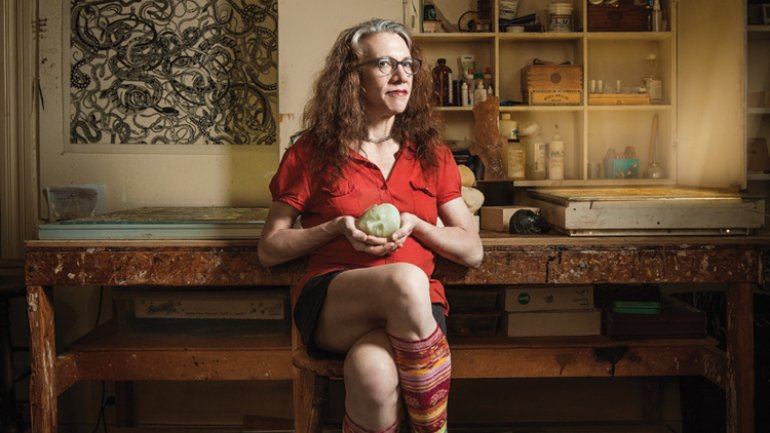Masters: Judith Schaechter
Masters: Judith Schaechter
Fellow
Judith Schaechter was supposed to be a painter. Her grandmother introduced her to painting when she was 7. She took painting classes as a teen. She entered Rhode Island School of Design intending to major in painting. “I went to art school fully identified with my future as a painter,” she says. “I had no doubts about this.”
Then she discovered the glass shop, near the graduate painting studios at RISD. She observed a stained glass class and was immediately smitten. After she tried her hand, “I knew instantly that that’s what I wanted to do forever.”
But there was a problem: She didn’t really respect the medium. “I considered stained glass to be a trivial footnote to art history, a junk medium for hobbyists and tradespeople,” she says. It didn’t have the mystique of painting.
Ultimately, though, and ironically, it was the accessibility of stained glass that was its saving grace for Schaechter. “To me, painting was a very serious activity full of gravitas and import, and glass wasn’t.” She had often felt paralyzed as a painter. By contrast, the “disinhibition in glass allowed me to work in it.”
Glass suits Schaechter’s work style, her need to switch gears every hour or so. “I feel like I’m in synchronicity with the material,” she says, noting the bias in so much of the art world toward conceptual work, and away from material and process. “I really like making stuff,” she says, “and there are a lot of making tasks with glass.”
She appreciates the investment of time glass requires, too. Early on she discovered “it took days to get the glass to do anything,” she says; “it was that lag time that allowed me to attach to it emotionally.” Painting didn’t demand the same sort of commitment, didn’t facilitate the same sort of bond. She’d make marks on a canvas, then paint over them with gesso and be back where she started in a matter of hours.
It took Schaechter a long time to appreciate the idea of craft, but now she is convinced it’s superior to fine art. And as her fluency as an artist and a craftsperson has grown, so has her satisfaction. She can’t imagine ever reaching an impasse with glass, unable to make the next window. “I can do it with my hands tied behind my back, blindfolded, in my sleep,” she says. “I can just do it now.”

